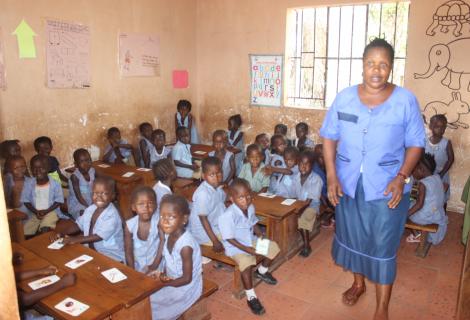
THE PUBLIC VERSUS AUSTERITY
TRENDS IN PUBLIC SECTOR WAGE BILL - HEALTH AND EDUCATION SECTORS IN SIERRA LEONE 2021
Sierra Leone has been given a consistent budget steer throughout the period 2016-2021 to cut the Public Sector Wage Bill to 6% of GDP from the IMF.[1] While this is pinned as a combined goal of the government and IMF within some Article IV reports, there are indications that the IMF played a significant role in setting it.[2] Moreover, the goal has remained consistent both before and after the 2018 General Election at which the ruling party changed and the newly elected President, Julius Maada Bio, made bold new commitments to expanding health and education. As such, while this is pitched as a government initiative it appears to be largely driven by the IMF – which includes the advice that the government should be working to contain and limit the wage bill to achieve it.
There are indications that the government has had to negotiate with the IMF in order to try to identify how the country can meet the ambitious new goals (i.e. to meet the commitment to ensuring free quality education, or the increase in health spending to meet the commitment to free health care) and despite a series of crises (i.e. the Ebola or COVID-19), while staying within the boundaries of the 6% target. As such, the target seems to allow for little reflection of the national realities or priorities.
Sierra Leone faces stark and continuing challenges in the health system, with gaps in resources and capacity evident across the public sector workforce at all levels. These gaps are especially pronounced in higher-skilled cadres: such as medical specialists and officers, midwives and highly skilled generalist and specialist nurses. Also, the country faces a substantial number of challenges to ensure that a qualified and effective education workforce can teach all children. Learning outcomes are low, almost one-third of the education workforce is unqualified and more than half are not on the government payroll as only 42% of teachers are on government payroll. The rest are teachers not yet on payroll but being supported by the schools with small stipend from the school subsidies while the others are from private schools. These challenges are mostly acute in remote areas. Ensuring opportunities are equitably and efficiently distributed across Sierra Leone is a key policy issue.
In a bid to address the various challenges in the education and health workforce, the Teaching and Health Service Commissions were established with the primary aim to identity, recruit and manage the teachers and health workers’ condition of service. However, both sectors continue to face serious challenges ranging from low pay, poor conditions of service and limited number of the workforce compared to the country’s populations.
The study was done to provide an insight on the need for government not to be constrain with wage bill limit agreed with IMF especially for key social services like health and education so that the high teacher-pupils; nurse-patients and doctor-patients ratio can be reduced over time.
[1] The individual steers in this period entailed cuts of between 0.5 and 1.9 percentage points to reach this target.
[2] The 2016 Art IV & ECF Review explicitly states that In consultation with [IMF] staff, the authorities have prepared a medium-term wage strategy that aims to reduce and contain the wage bill within 6 percent of GDP